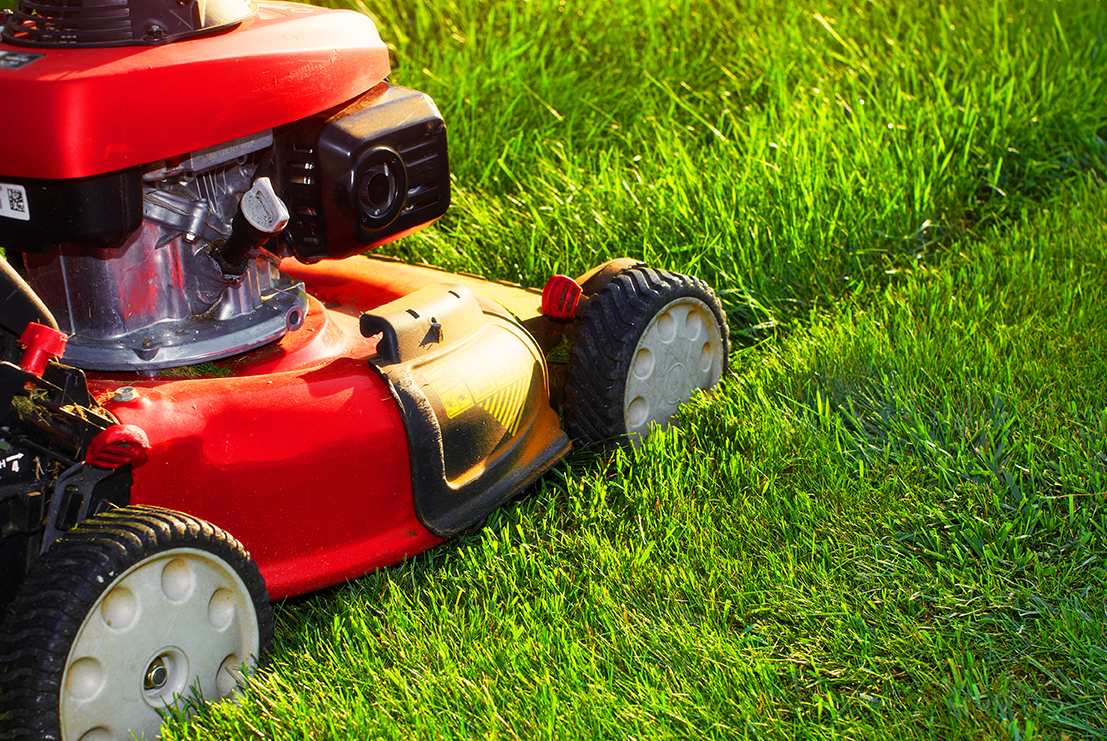A Hampton Roads Annual Lawn and Garden Maintenance Calendar
| By SCOTT EASTON | 0 Comments

The Hampton Roads area has a very diverse and variable climate. If you have lived here for a while, you have surely noted that we can have 70 degree days followed by 20 degree days in January. Our winters are mostly mild with cold snaps that sometimes drop a bit of snow. Our summers have hot, sultry weather, plus hurricanes, tropical storms and nor’easters with a sprinkling of perfect days in between. If you like seasons and variety, this is the place to be!
When taking care of our gardens and lawns, working with our ever-changing weather can be a little tricky. So, it helps to have a basic understanding of our regional climate as well as your local microclimate. It’s important to know your frost dates as well. For the Hampton Roads area, the last frost in the spring typically occurs between April 11-30 and the first frost in the fall occurs between November 1-20. Frost dates can vary depending on your location in the Hampton Roads area. For example, Williamsburg will likely have frost later in the spring and earlier in the fall than Virginia Beach. You can use the links in the references below to check the frost dates for your city in Virginia.
Late Winter through Spring – The Busiest Season
Be aware of the last spring frost date for your area. Be prepared to protect delicate plants and sprouts in case of an unexpected late frost. You can cover plants with mulch, tarps, sheets or even containers like baskets and coolers. Be sure to cover them before it gets dark so you can trap the warmer air. You can also wet the ground around the plants and coat them with water. When the water on the plants freezes, the moisture in the ground creates humidity to insulate them from the cold.
Start seeds – If you have the space, now is a great time to start some seeds indoors. It’s typical to plant about 8-10 weeks ahead of when you want to put your seedlings into the garden outside.
Prune before plants bud – It’s also an ideal time for pruning, especially deciduous trees, shrubs and vines such as climbing roses and clematis.
Cut back ornamental grasses
Do not prune spring-flowering shrubs however, except to correct problems. Shrubs like Forsythia, Azalea, Rose of Sharon and Rhododendron are all examples of shrubs to prune after they bloom. See the references below for more details on what to prune when.
Transplant – If you have been wanting to move any shrubs around to different locations in your garden, now is the time to transplant them, while they are still dormant (before they start budding).
Mowers and Tools – Sharpen your mower blades. Dull blades can tear the grass rather than cut it clean, leaving jagged edges that discolor your lawn and invite pathogens. *Note: you should sharpen your mower blades once per month during the grass-cutting season. It’s also a good idea to have a backup blade on hand.
Clean and tune up your mower and weed eater, and get a fresh container of gasoline if they are gas powered. Old gas that has been sitting around all winter might have accumulated moisture which could harm engines. Your city’s website should have information on how to dispose of any hazardous waste (eg. Gas, oil).
Clean up your lawn – Get out your rake and remove any sticks and leaves that have accumulated over the winter months. This will let your lawn “breathe” as well as prepare it for any seeding or fertilizing you need to do.
Aerate – Aeration is the process of getting oxygen to the roots of your grass. You may or may not need to do this, it really depends on the type of grass you have and the condition your lawn is in. See the link in this section for details. This can be accomplished by using an aeration tool or machine, wearing spiked shoes and walking around the yard or even just a hard rake to loosen up the soil enough to make things happen.
Fertilize – If your lawn could use some nutrients, now is the time put down your fertilizer. You can do this with or without aerating. However, if you aerate, do that first and fertilize after. There are many fertilizers to choose from – it’s best to do a soil test to see what nutrients might be missing and to also get what is best for your type of grass. There are also organic fertilizer options when there is a concern about storm water runoff being contaminated with chemicals. Read more about organic fertilizer options at Rodales.
Prepare outdoor flower beds – Once the last frost has come and gone, remove all old mulches, newspapers and compost, pull out any weeds that may have sprouted up, turn the dirt and add new compost/nutrients to the soil.
If you did any planning over the winter for new beds, now is the time to dig those out and prepare them for planting.
Planting – After the last frost, it’s time to start planting! This is the time to plant new trees, shrubs, perennials and early vegetable crops as well as annual seeds.
Late Spring through Summer
Planting – With the danger of frost in the past, planting should be in full swing now. The garden centers and nurseries will be stocked up. Now is the time to get out early and fill your beds with bright annual flowers, hardy perennials to accent your landscape, vegetables to grace your table and herbs for cooking.
Prune – Summer is a good time for pruning and shaping up your evergreen shrubs and hedges. It’s also time to prune those flowering shrubs we skipped in spring such as azaleas and rhododendrons once they have finished blooming.
Deadhead – Deadheading or pinching back the blooms that have faded will keep your plants looking good and blooming longer in many cases.
Water, Water, Water – All growing things will need lots of water now because this is prime growing season. Be conscious of how much rain you are getting and supplement that as needed to ensure your flowers, shrubs, trees, grass and gardens are getting all the water they need to grow beautiful and healthy. Lawns especially need long, deep waterings to grow green and healthy. You can set up a sprinkler system for large areas, or get a sprinkler that you can move around as needed. You can also get a nice glass of lemonade or a cold beer and sit in a lawn chair and just hold the water hose!
Fall
Planting – Early fall is a great time to add some pops of fall color to your beds or in pots around the outside of your home. Popular choices are annuals like pansies or perennials (these can also be used as annuals) like mums (Chrysanthemum). Use these colorful flowers to fill in the gaps between dead or dying perennials to keep the colors going until the first frost.
Prune – Fall is typically a bad time for pruning, but there are a few plants that are okay to trim back when the blooming season is over. These include perennial flowers such as purple cone flower, beebalm and fennel.
Clean up Your Lawn – In the fall, the main concern is keeping your lawn free of leaves and other debris. Be sure to get up clumps of gumballs and twigs as well as piles of leaves so they don’t kill your grass.
Prepare your garden beds for winter – Before you put your beds to sleep, there may be time to get in one last crop of late season veggies. But when you are ready to be done for the year, clean out the beds and cover them with newspaper and leaves. Read more about preparing your garden for winter.
Winter
Shop for next year -Peruse garden/seed catalogues to help determine new and exciting vegetable varieties to try in the garden.
Plan – Plan out and design next year’s vegetable garden. Keep a journal of what you plant each year so you can try to implement crop rotation of vegetable families. This helps reduce disease buildup and keep your soil fertile. You can also plan for ornamental plants you might like to grow that are low maintenance or better for shade or bees, etc. Each year there will be trial and error, but you have the opportunity to craft your garden to suit your needs and liking.
Indoor gardening – If you have a sunny window, consider growing herbs and/or microgreens to add fresh greens to your diet
If you are storing bulbs – Keep a check on the bulb’s condition to ensure they are firm, removing any soft or rotten bulbs
Avoid fungus gnat infestations in house plants by allowing the soil to dry out in between watering
Plants are always growing whether we participate or not. But when we take a hand in it, we can create an oasis of natural beauty around our home. If you love keeping a nice lawn and garden around your home, we hope this list will be helpful and inspirational. We’ve only touched on points, so please check the references in this article and below for more detailed information. And happy growing!
References:
Virginia Last Frost Dates By City:
http://www.plantmaps.com/interactive-virginia-last-frost-date-map.php
Virginia First Frost Dates By City:
http://www.plantmaps.com/interactive-virginia-first-frost-date-map.php
Gardening by the Month in Hampton Roads:
Lawn and Garden Checklist from Southern Living:
http://www.southernliving.com/marketplace/garden-lawn-care-checklist
A guide to successful Pruning / Shrub Pruning Calendar:
http://pubs.ext.vt.edu/430/430-462/430-462.html
More on Microclimates:
https://treeyopermacultureedu.wordpress.com/chapter-5-climatic-factors/microclimate/
Caring for your garden tools:
http://www.thegardenhelper.com/tools.html
Year round guide to Lawn and Garden Maintenance:
http://www.rutgersln.com/nursery/gardening-info/year-round-maintenance-schedule/
Season by Season Lawn Maintenance Calendar:
https://www.houselogic.com/by-room/yard-patio/lawn-maintenance-calendar/









